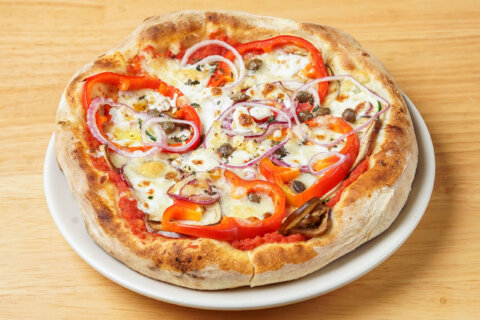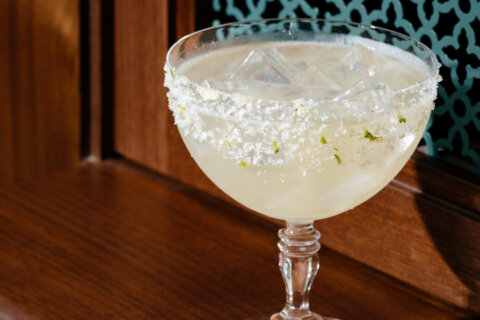I just returned from the Academy of Nutrition and Dietetics’ 2015 Food and Nutrition Conference and Expo in Nashville — one of the largest gatherings of food and nutrition professionals in the world. This year’s conference featured sessions that addressed everything from food waste and hunger to adolescent eating disorders and nutrition strategies for athletes.
The expo part of the four-day meeting is ideal for trendspotting. This is where you’ll find a range of exhibitors showcasing new food and beverage products, equipment, education campaigns and corporate initiatives. Some trends remained strong, such as gluten-free, protein, whole grains, non-GMO and clean ingredients. Others trends appeared to be gaining momentum, such as 100 percent grass-fed, whole-milk dairy products and coconut in many forms — coconut water fortified with protein, toasted coconut chips, coconut oil salad dressings and spreads and overnight muesli.
It was tough to narrow down my list, but here’s what I thought were the top eight food trends uncovered at the show:
Pulses beat loudly. Several exhibitors were boasting about pulses — beans, dry peas, lentils and chickpeas. The United Nations has declared 2016 the International Year of Pulses, so the celebrations have officially begun. Beans were baked into chips and pasta, flavored up and packaged in ready-to-eat cartons, served in salads and soups and showcased in hummus. Sabra promoted its “Two Spoons of Hummus a Day” campaign to close the bean gap, and Eat Well Embrace Life sampled unique hummus varieties made with different beans, including edamame, white beans and red lentils.
Salad kits go solo. Prewashed and packaged salad mixes have been around for a while, but the concept of salad kits for one is new. Dole Foods is introducing an innovative product called Take Aways that combines chopped salad mix with a packet of whole grains and seeds, along with a vinaigrette dressing or salsa to drizzle on top. Two of the four varieties include diced chicken. You shake the salad in the box that doubles as your serving bowl. The kit even comes with a spoon. Eat Smart’s new Plant Powered Protein salad kits are similar, but the packet inside features plant-protein toppings — including a mixture of seeds, nuts, roasted edamame, dried corn and roasted soy nuts.
Sprouted grains gain traction. It seems that sprouted grains have gone mainstream. The trend has been growing in recent years, and it’s no longer a natural foods niche. Sprouted grains popped up in several places on the exhibit floor — from sprouted grain cereals, bars and bread to sprouted rice and risotto mixes. Sprouted grains are harvested right after they start to sprout but before they turn into a full-fledged plant. Since a sprouted grain is lower in starch, it has higher proportions of other nutrients, such as protein, vitamins and minerals (especially iron and zinc) compared to unsprouted grains. Some claim that sprouted grains are higher in certain enzymes and may be easier to digest, but the advantages often get over-blown.
Seeds see more love. Seeds may be the new nuts — showing up in nutrition bars and other snacks, cereals, granola, salad mixes and more. And it’s no longer just about chia seeds, which seemed to steal all the glory in the past. A company called Go Raw sampled an interesting array of sprouted seeds — sunflower, pumpkin, watermelon and other seeds.
Frozen meals get a fresh take. Multiple companies are trying to shake up the freezer aisle. The new technology for frozen meals is paper pouches for steam cooking in the microwave. It’s definitely a new era of the old TV dinner. Luvo showcased globally-inspired entrees — including vegetable bibimbap, tandoori-inspired spiced chicken, sweet potato and butternut squash enchiladas and chicken and harissa chickpeas.
Probiotics go beyond yogurt. Probiotics, those beneficial bacteria made famous by yogurt and kefir, made appearances in dairy products and beyond. A flavored water-based beverage called Go Live stashed the probiotics in the lid that will spill out into the bottle once it’s opened. New individual packets of powdered probiotics and fiber to mix with water, smoothies or other foods were humorously named Regular Girl — to help girls “eat, drink and be regular.”
Desserts slim down. A new frozen dessert called Wink was created by a guy with celiac disease and a dairy allergy who wanted a healthier version of ice cream that he could enjoy. The entire pint contains only 100 calories, and it’s vegan, gluten-free, sugar-free, dairy-free, fat-free, soy-free, nut-free and egg-free. So what’s in it? That’s what I wanted to know. Turns out, it’s mostly water and pea protein, with some inulin, tapioca, guar gum, monk fruit, stevia and a variety of flavors — from cake batter to cinnamon bun. I think I’ll stick with real ice cream or frozen yogurt, but Wink may be a good option for some people.
Packages tell a story. Throughout the exhibit floor, I noticed that companies both big and small were using their packages to tell their story. Some showed their commitment to sustainability and transparency with language on the back panels or through the package itself (like recycled paperboard printed with soy or waterless ink). I also saw more front-of-pack call-outs — from 2 cups of vegetables per serving to chicken raised without antibiotics.
More from U.S. News
Seeds 101: A Guide, From Chia to Hemp
Tasty, Healthy Ways to Use Raw Cacao
8 Hot Food Trends From the Food and Nutrition Conference and Expo originally appeared on usnews.com







